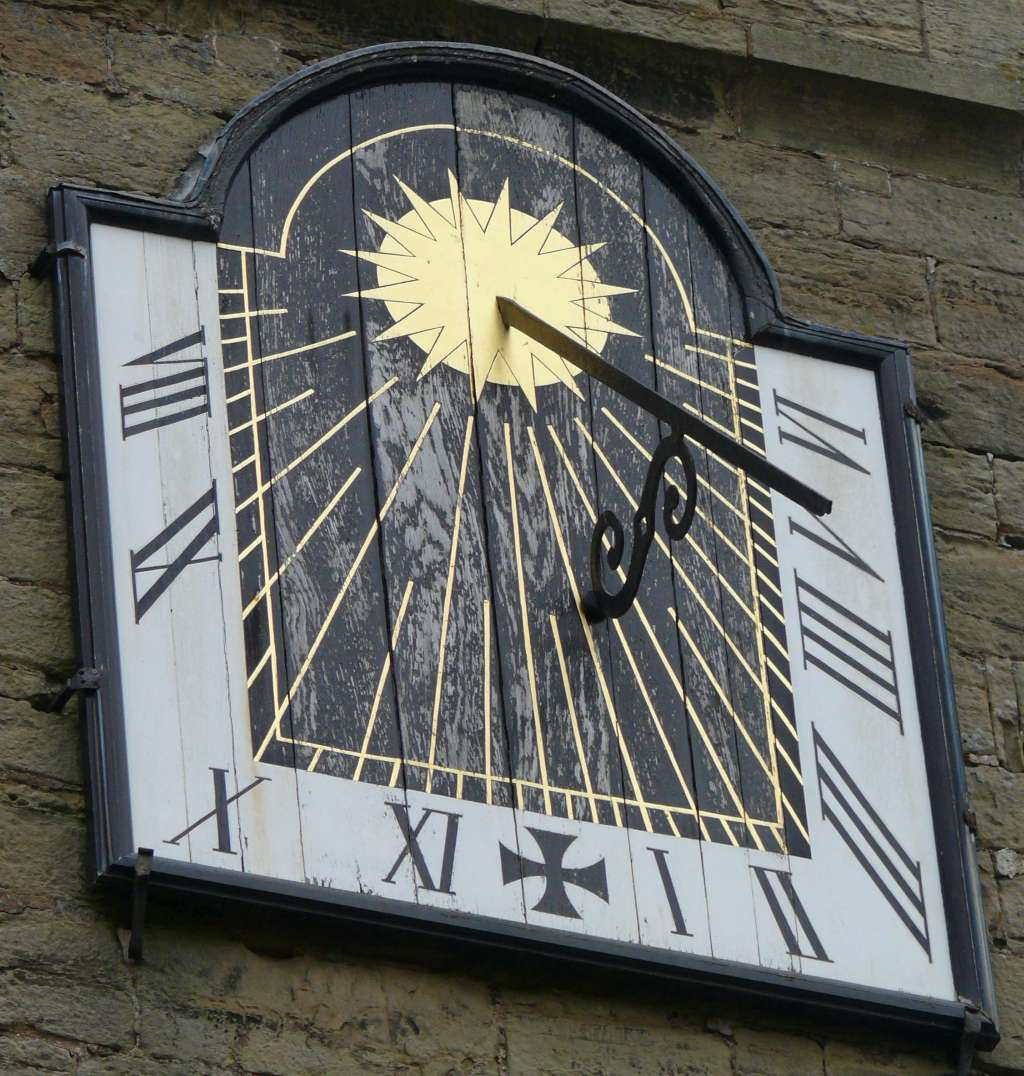
The Dial on SunInfo's Christmas Card
for 2016
The Sundial
This wonderful vertical wooden dial is to be seen on the right of the tower of St John the Baptist's Church, Berkswell, high on its South wall. The dial declines 13 degrees West of South. It was last recorded as 'restored' in 2004.
It is made from a planked dial plate, about two feet square with a semicircular breakarch top and the whole held in place by cleats and protected by lead over the top. A prominent 16 point gold sunburst lies at the gnomon root with an unusual (possibly even unique in the UK) 'underlying' gold, circular sun. It is painted with a black ground but with a white outer 'chapter ring' timescale which uses black Roman lettering painted in line with the hour lines. The hour lines and sunburst are all painted in gold. An ornate 'S' shaped iron gnomon also serves as a "rain-release" supporter. The dial displays 8am to 6pm in quarters. It uses a cross patty to mark solar noon and uses IIII for 4pm.
It is thought that the dial may have continued some time in use after the installation of the clock as the 18th century villagers were in the habit of reading the sundial rather than the new and (then) obviously unreliable clock. The earliest time keeping devices for the rector were the two scratch sundials which are still visible on the southern wall of the church.
Photograph taken 16 May 2008, just before 2pm BST - though without a shadow sadly you wouldn't know that! The dial is recorded as SRN 2176 in the National (MIDAS compliant) UK Register of sundials.
[Download the 2016 Suninfo Christmas Card]
The Church
St John's Church has several fine examples of well preserved
Norman architecture dating back to the 12th Century including its two remarkable
Norman crypts.
A particular feature of the church is the two storey gabled and timbered porch
added in the 16th Century. The room over the porch is now the vestry but was
originally the first school room in the village. The pegs for the boys hats and
the benches are still there.
Much of the woodwork in the church was carved in the 20th century by the famous
wood carver Robert Thompson. His mark is a mouse and nine such marks can be
found in the church.
The south and north walls of the chancel have some carved corbels under the
eaves, these have faces not totally human, with feline ears. It is thought they
were to ward off evil, or perhaps to warn folk against evil-doing.
The remains of two 'scratch dials' are on the south wall. They were used by the
priest to tell the time for the services. Near the dials is the grave of Maud
Watson, the first woman Lawn Tennis Champion at Wimbledon. Miss Watson was the
daughter of a former rector and lived next door to the church in the Old
Rectory, a fine red brick Georgian house, now a private home called 'The Well
House'.
Why not visit the Church? It sometimes has a beer festival on May Day!
[Back]
12.12.16